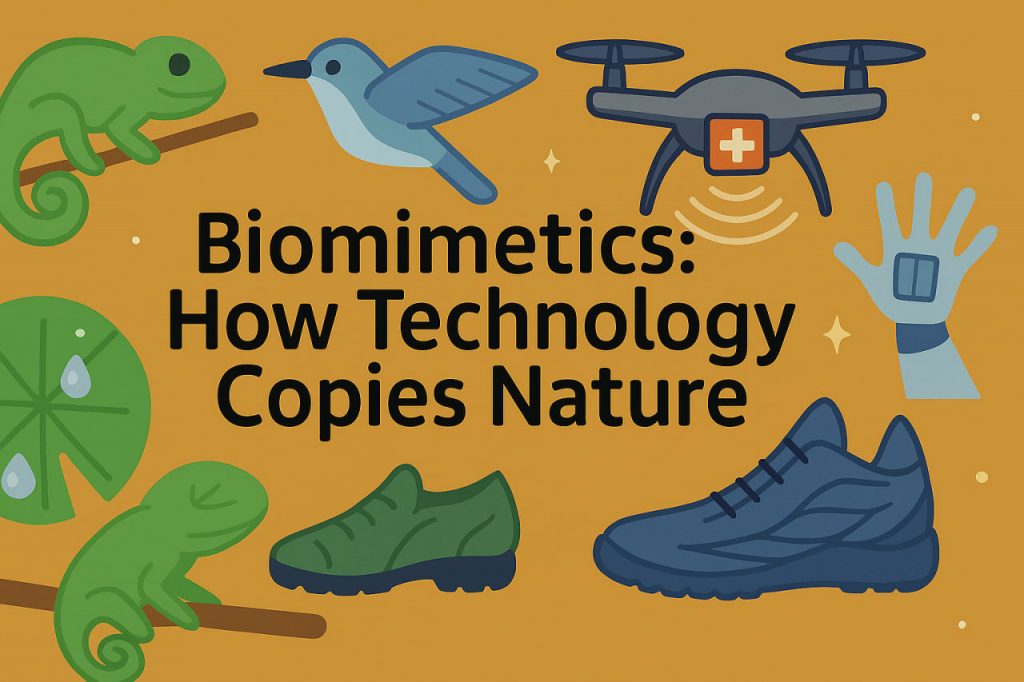Biomimetics is the science and technology of designing materials, systems, and devices inspired by nature’s solutions. Over millions of years, evolution has refined biological systems to be efficient, adaptive, and sustainable. Engineers, scientists, and designers study these natural strategies to create innovations in robotics, materials science, architecture, and medicine.
The Principles of Biomimetics
Biomimetics works by analyzing the form, function, and processes in living organisms and translating them into human technology. Nature provides countless examples of optimization — from the aerodynamic shape of bird wings to the self-cleaning surface of lotus leaves.
Examples in Modern Technology
- Velcro – Inspired by burr seeds that cling to animal fur using tiny hooks.
- Bullet train design – The nose shape of Japan’s Shinkansen trains was modeled after a kingfisher’s beak, reducing noise and increasing speed.
- Self-cleaning surfaces – Lotus leaves repel water and dirt, inspiring coatings for glass and textiles.
- Gecko-inspired adhesives – Mimicking gecko footpads enables reusable, strong adhesives.
- Sharkskin swimsuits – Textures based on shark skin reduce drag in water.
Biomimetics in Robotics
Robotic engineers often look to animals and insects for inspiration. For example:
- Flying drones with wing structures inspired by dragonflies.
- Underwater robots imitating fish swimming patterns for better maneuverability.
- Climbing robots modeled after geckos to scale vertical surfaces.
Medical Applications
Biomimetics is revolutionizing medicine by creating better prosthetics, surgical tools, and drug delivery systems. Examples include:
- Artificial heart valves inspired by biological valves.
- Bone-like materials for implants with a structure similar to natural bone.
- Needles inspired by mosquito proboscis, causing less pain during injections.
Challenges and the Future
While biomimetics offers enormous potential, replicating complex biological systems can be costly and technically challenging. Advances in 3D printing, nanotechnology, and AI-driven design are making it easier to copy nature’s solutions at both micro and macro scales. In the future, biomimetic designs may lead to breakthroughs in sustainable energy, green construction, and space exploration.
Glossary
- Biomimetics – The design and production of systems and materials modeled on nature.
- Optimization – The process of making a system as effective and efficient as possible.
- Prosthetic – An artificial device that replaces a missing body part.
- Nanotechnology – The manipulation of matter at the nanometer scale.
- Aerodynamics – The study of the motion of air and its interaction with solid objects.


